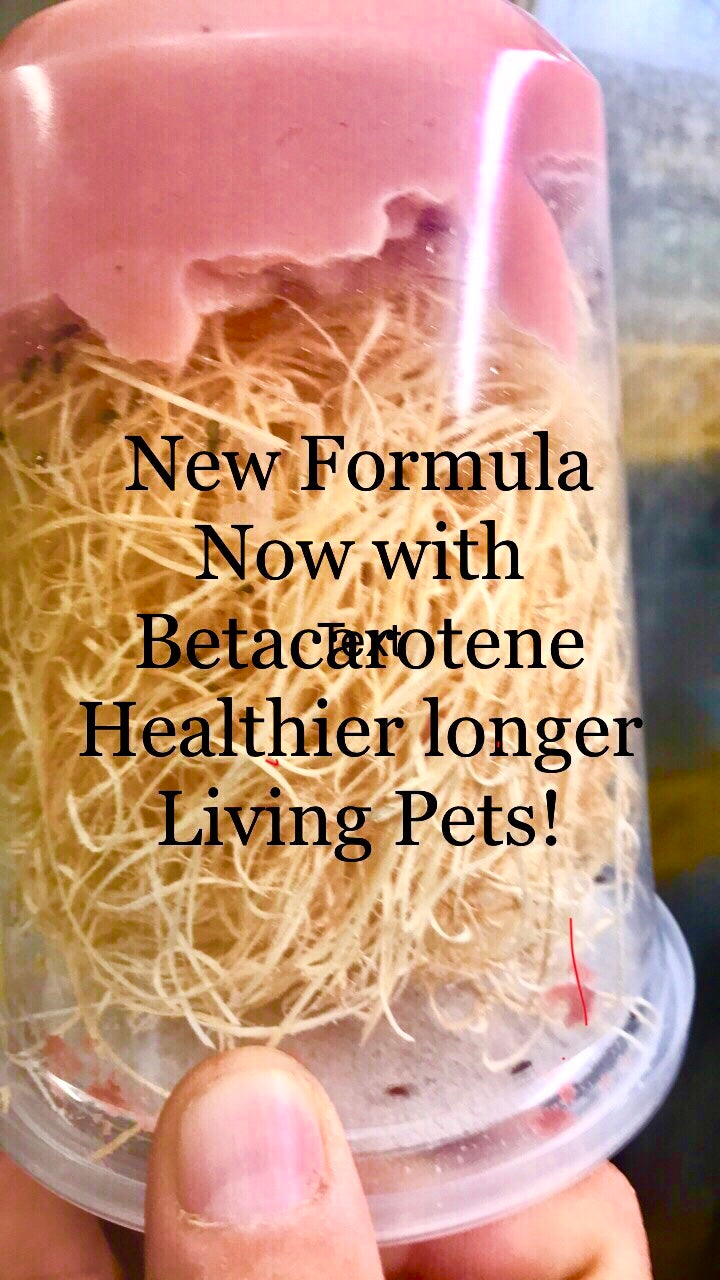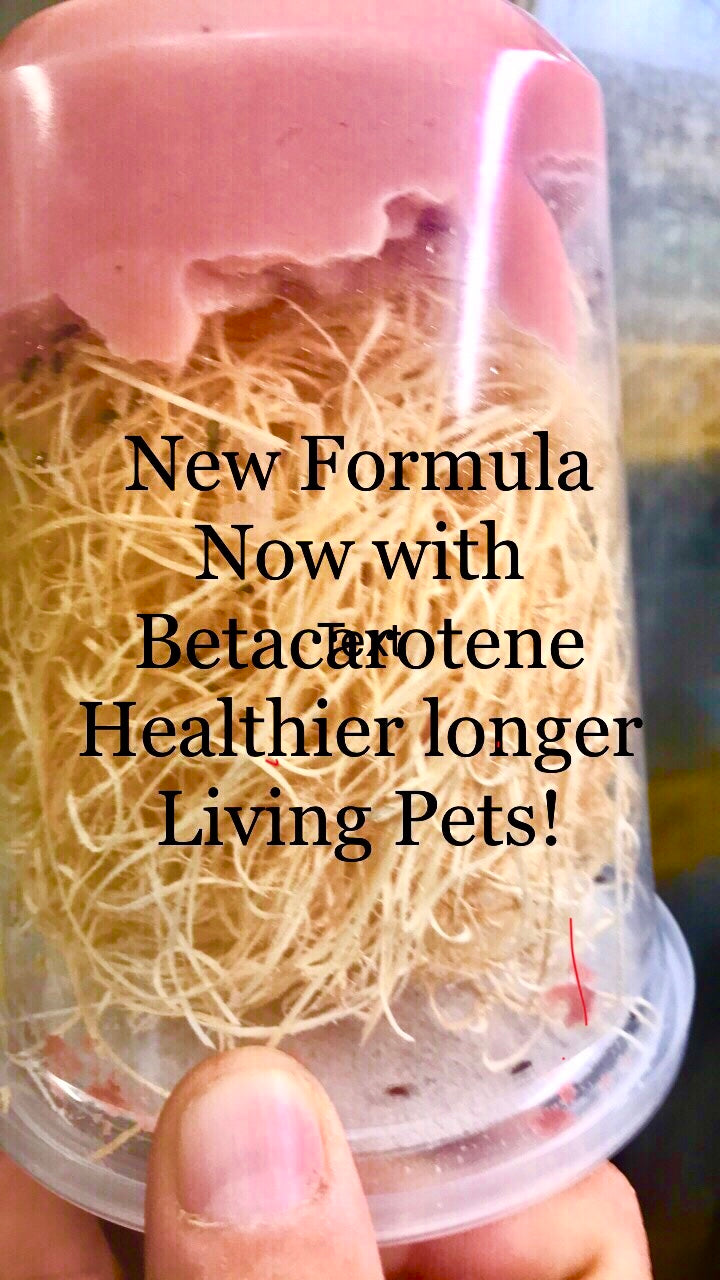
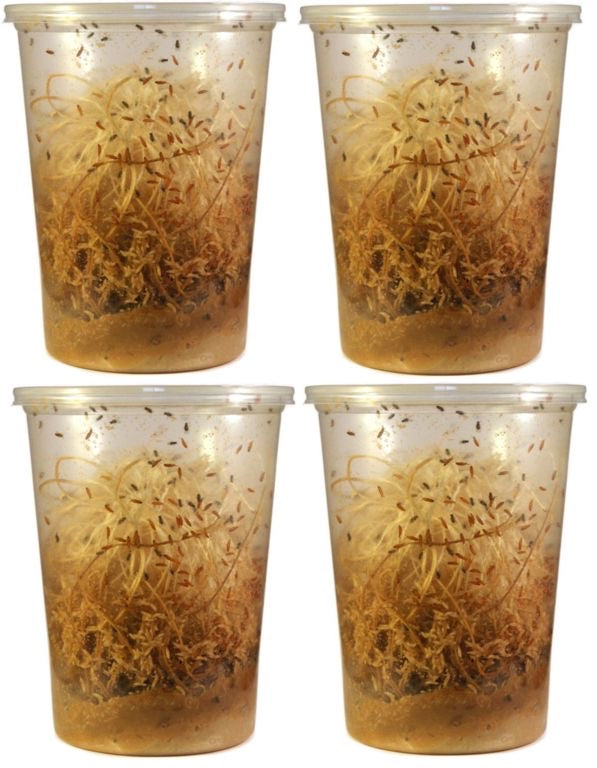
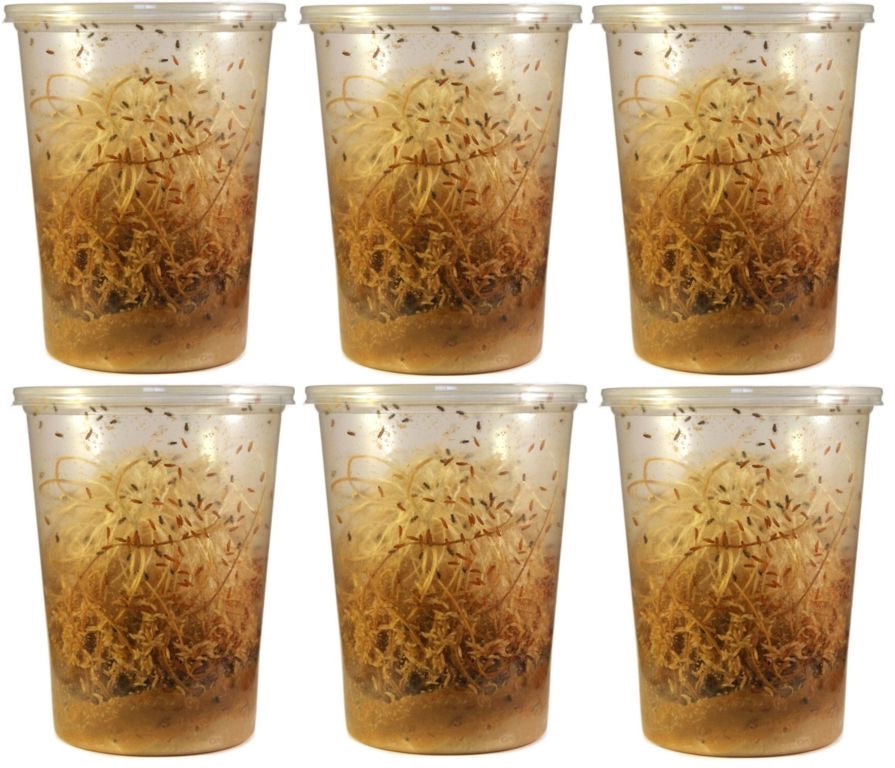
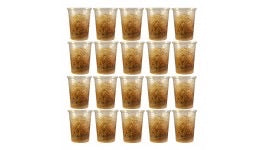
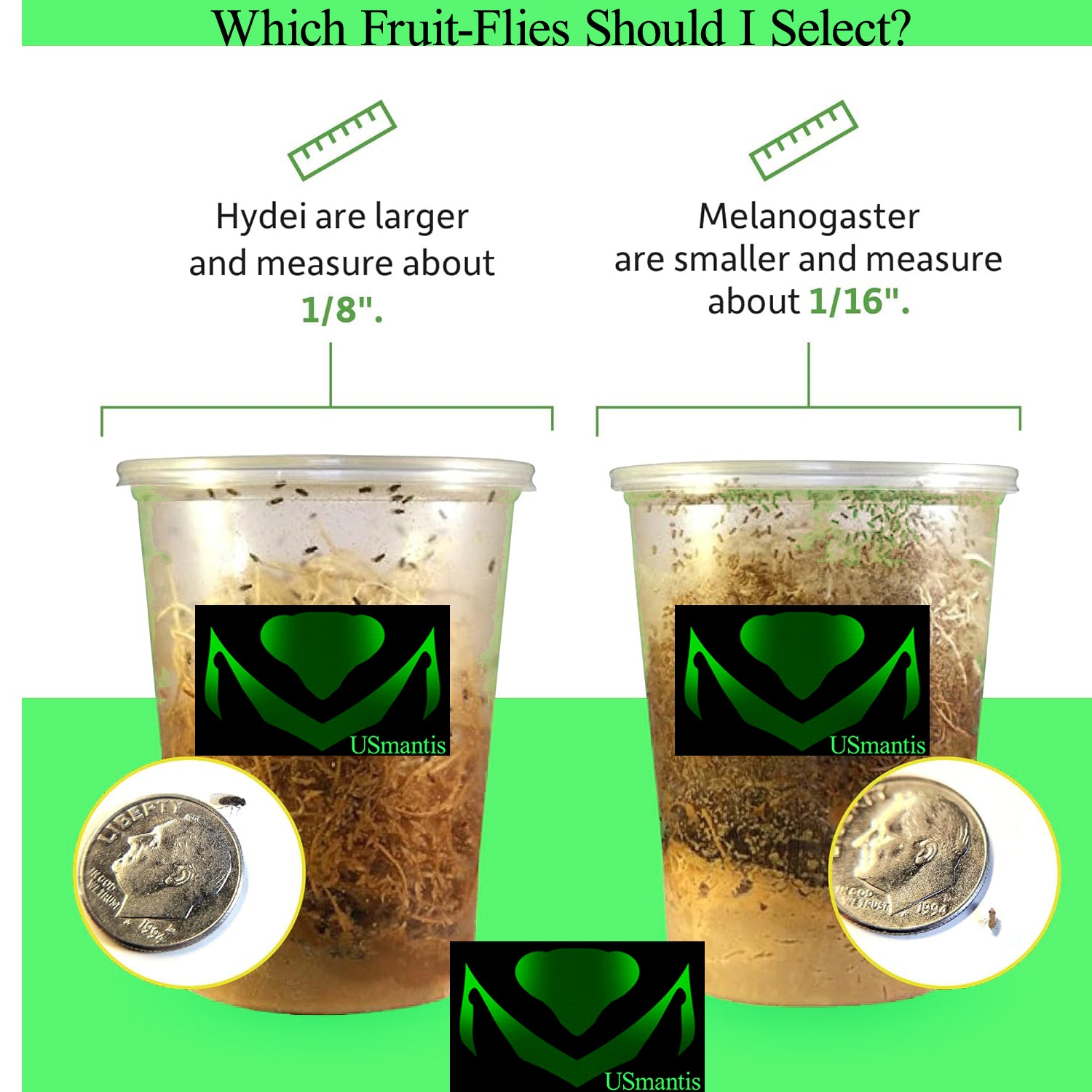
Sale
Fruit Flies Live D. Hydei Fruit Fly Cultures NEW Formula!!
$14.00 - $180.00$110.00 - $250.00
Drosophila melanogaster Fruit Fly Cultures should be kept at 75-78F and 60-80%. Drosophila hydei Fruit Fly Cultures will be 8-14 days old when you receive
- Fruit Fly Cultures Care, How To, Using and Making
Introduction: Fruit flies are the go-to feeder insect for small carnivorous pet bugs, reptiles, amphibians, and many other small pets. Several varieties are on the market, but the main two are Drosophila melanogaster and Drosophila hydei. Though the care for these two species is the same, your choice depends on what you're feeding them to. In both cases, most of the varieties available online cannot fly like the wild fruit flies that visit your fruit basket in the warmer summer and fall months.
-
Lifespan
- If kept properly, these cultures will produce for at least 2 weeks.
-
Fruit flies have a long history in this country as feeders and for studies in genetic inheritance in laboratories. We owe our wingless cultures of feeder Drosophila melanogaster to this science. The fruit fly is a model organism for these studies because it reproduces new generations very quickly, in as little as about 7 days. Cultures ship with adult flies; usually, these have laid eggs in the food media at the bottom of the cage. Often, larvae are already wriggling around through the half-inch or so of food media at the time of arrival. Within a week, eggs hatch, larvae grow more prominently, and then pupate (little cocoons they paste to the sides of the container). Finally, fresh adults emerge from these pupae/cocoons. Both commonly available fruit flies on the market can climb up the smooth surfaces of glass and plastic tank walls.
- Drosophila melanogaster is the smallest of the two popular fly species on the mainstream hobby market. These tend to be genetically modified to be apterous (completely absent of wings). They are the go-to option for the smallest of carnivorous pets.
- Drosophila hydei have 2 to 4 times the mass of D. melanogaster, so they are the next step up for pets that have grown slightly too large for the D. melanogaster. Most D. hydei cultures available for sale on the open market are genetically modified so that the musculature of the wings is inoperative. They have wings, but they cannot fly. At best, they can hop around a little bit, making them highly attractive to your predatory pets.

